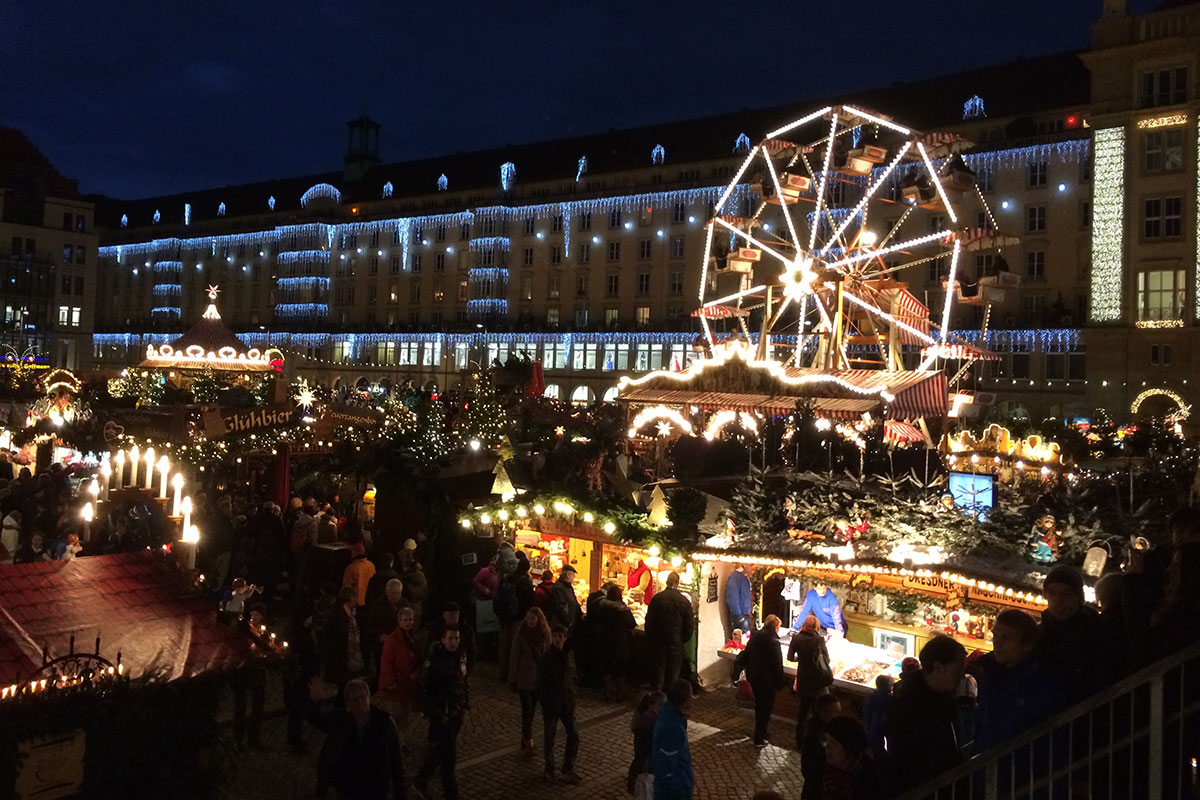Normally at this time of year, the German-speaking lands of Central Europe would be bustling with Weihnachtsmärkte (Christmas markets) or Christkindlmärkte (Christ Child markets), filled with food, drink, good cheer, and other longstanding traditional activities. But nothing seems to be normal in 2020, so almost all of those markets never opened.
Starting in early November, the notices began appearing across Germany, Austria, Switzerland, and elsewhere: Der Weihnachtsmarkt 2020 ist coronabedingt abgesagt (The 2020 Christmas Market is closed due to the coronavirus). In some places, a few small kiosks have opened, and virtual markets abound online. But the cheery lights, the hearty camaraderie, and of course the delicious aromas of holiday foods are absent this year.
My own favorite memories—based on two years in the 1990s as a guest professor of American studies at the University of Hannover in northern Germany and University of Leipzig in eastern Germany—center mostly on the Glühweinstand, the market stall serving hot mulled wine, which seemed the perfect beverage for those dark and chilly evenings in December. Some outdoor kiosks tried selling Glühwein this year until banned by new regulations taking effect December 16.
Below is a recipe for Glühwein mit Schuss (mulled wine with a shot), which you may want to try at home this year for a touch of holiday spirit—albeit without the crowds of people holding their mugs. For even more holiday spirit, I also asked several of my friends in Germany to share with me some of their favorite food memories from the Weihnachtsmärkte of years gone by.


“Going to the Weihnachtsmarkt has always represented a special outing for as long as I remember,” writes Judith in Berlin. “As a child, there were two things I was most excited about: getting to eat cotton candy, and riding the historic carousel with its pretty horses on the Römerberg in Frankfurt (my hometown) with my little sister. My parents also used to buy a bag of roasted chestnuts for all of us at some point so we could warm our cold fingers (and burn our tongues) just a tiny bit along the way.”
Anne in Leipzig observes how “the Weihnachtsmarkt in winter is the place for Gemütlichkeit—where at the end of the year you can socialize with colleagues, or meet friends and acquaintances, who have come to the city specifically for the Weihnachtsmarkt.” Anne’s favorite foods include gebrannte Mandeln (roasted caramelized almonds), Grünkohl (green kale), Schupfnudeln (potato noodles with sauerkraut and ham), and Handbrot (freshly baked bread with melted cheese and ham cubes).
Astrid in Empelde (a suburb of Hannover) regards the Weihnachtsmärkte as “a wonderful German tradition that brings me into the Christmas spirit every time I visit. There’s Christmas music everywhere, and Christmas smells of roasted almonds and, of course, bratwurst and Glühwein! And even when it’s really crowded, you can usually find a quiet corner apart from the noise where you can enjoy your Christmas drink with friends or family. The only thing that’s usually missing is snow!”
Corinna in Quickborn (a suburb of Hamburg) has special memories of the Liebesapfel (candy apple), “because when I was very young my grandparents went with my brother and me to a Christmas market nearby. We were allowed to pick one special treat during our stay. For me, the red glazed apple looked so special—perhaps also because it was not available at other times of the year. I tried it once and from then on as a child I always chose it. Of course, later it tasted way too sweet for me.”


Corinna also suggested the following recipe.
Glühwein mit Schuss
Ingredients
10 fluid ounces dry red wine
4 fluid ounces orange juice
2 fluid ounces rum
Fruit: 1 orange or 1 lemon or 1 apple—or combinations thereof
Spices: 1 cinnamon stick or 1 clove or 1 vanilla pod—or combinations thereof
Preparation
Wash the piece of fruit thoroughly and cut into slices approximately a quarter-inch thick.
Place the red wine in a large saucepan together with orange juice, fruit slices, and spices and cook over moderate heat for 15 to 20 minutes.
Fill two large mugs with the wine, and then add 1 fluid ounce of rum to each. Serve and drink immediately.


James Deutsch is a curator at the Center for Folklife and Cultural Heritage. He is unable to recall the number of Glühwein stands he has visited since making his first trip to Germany in 1992.


